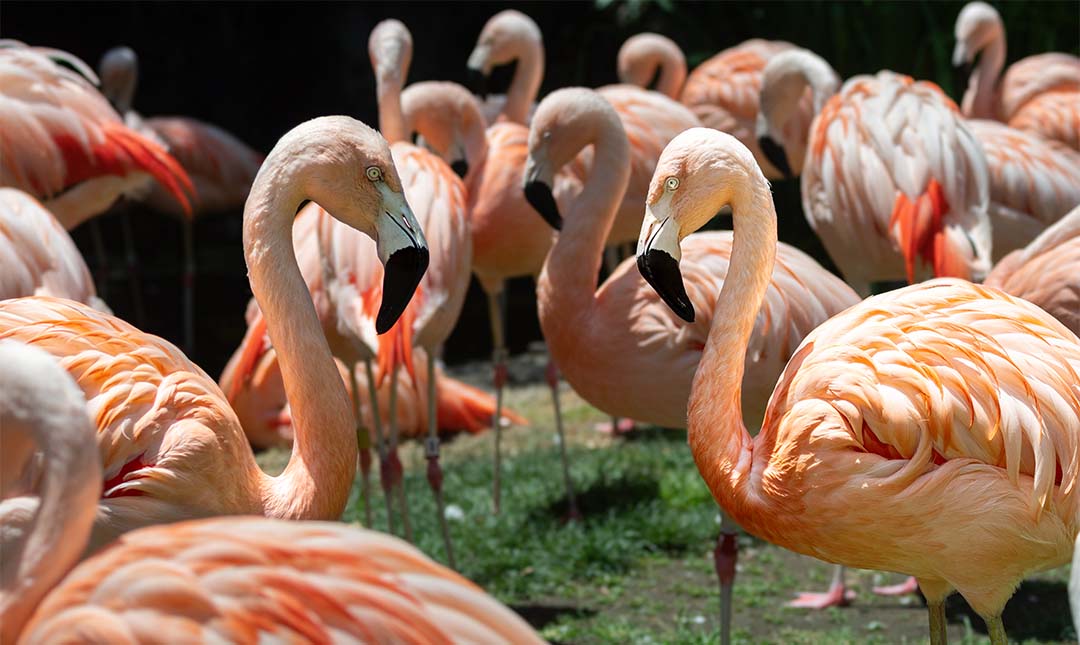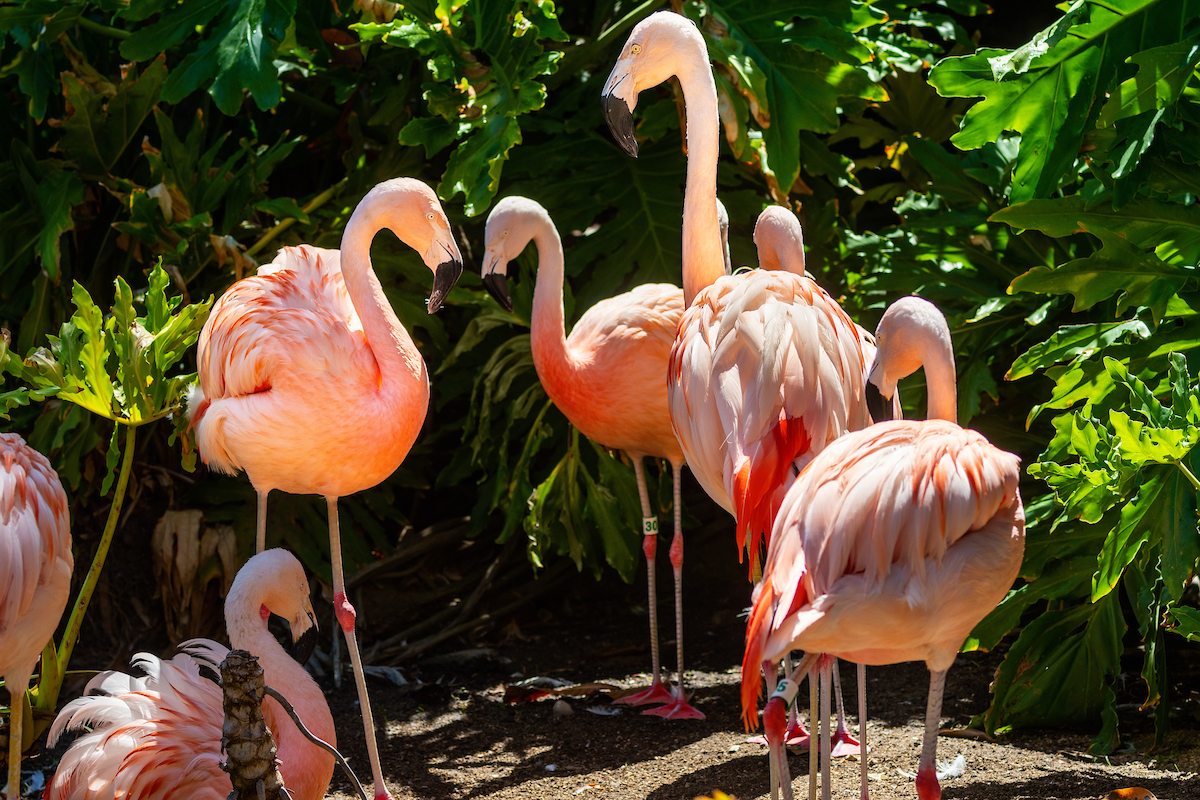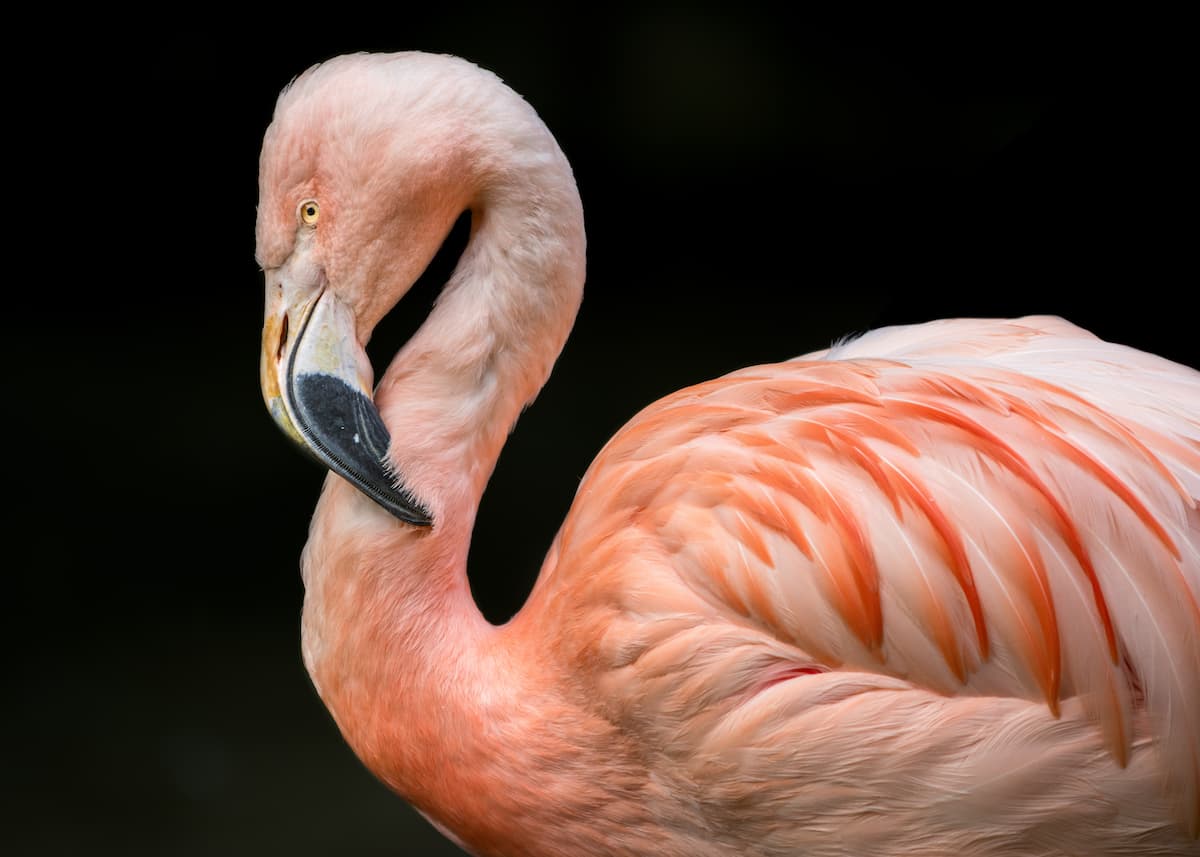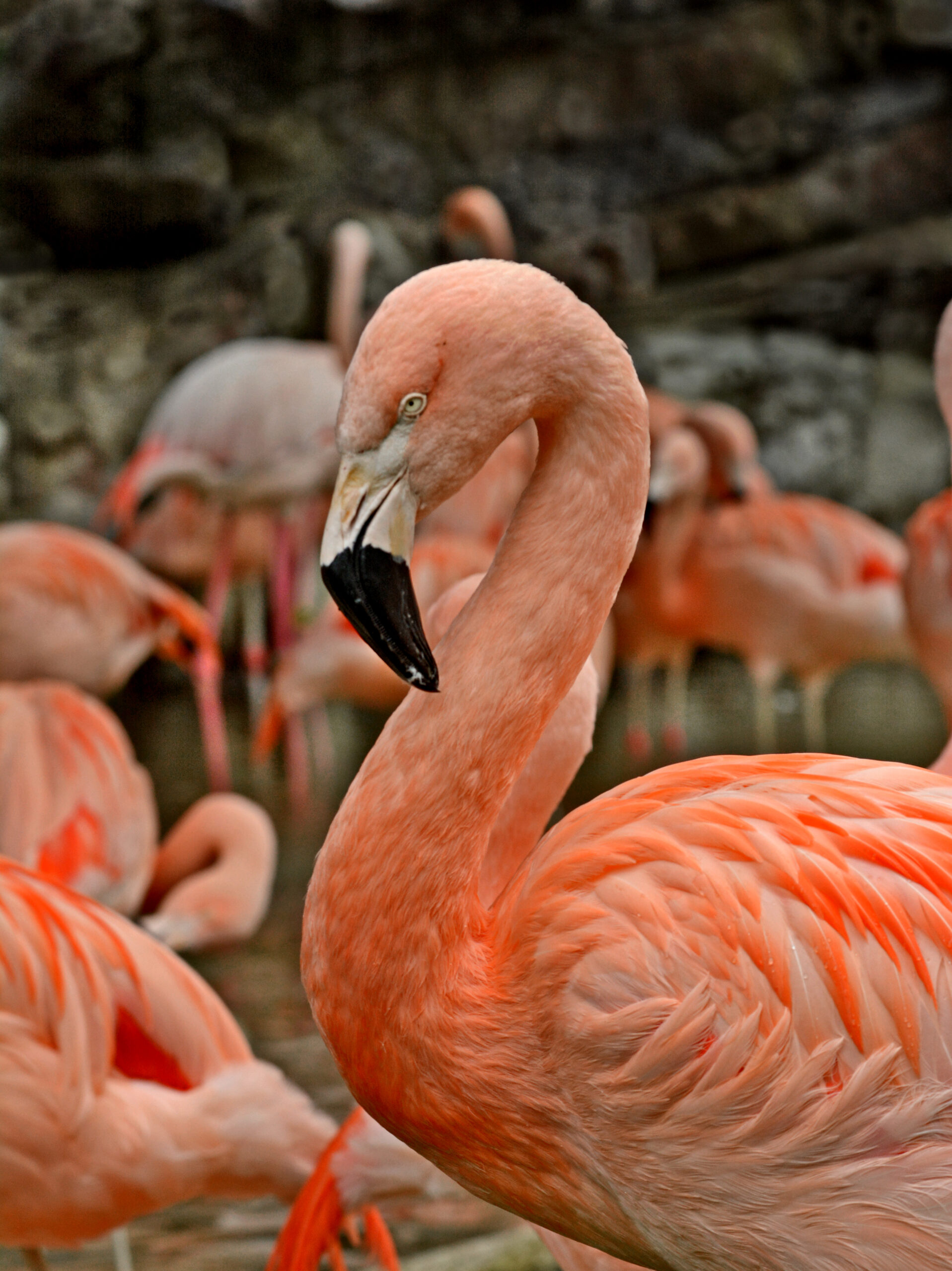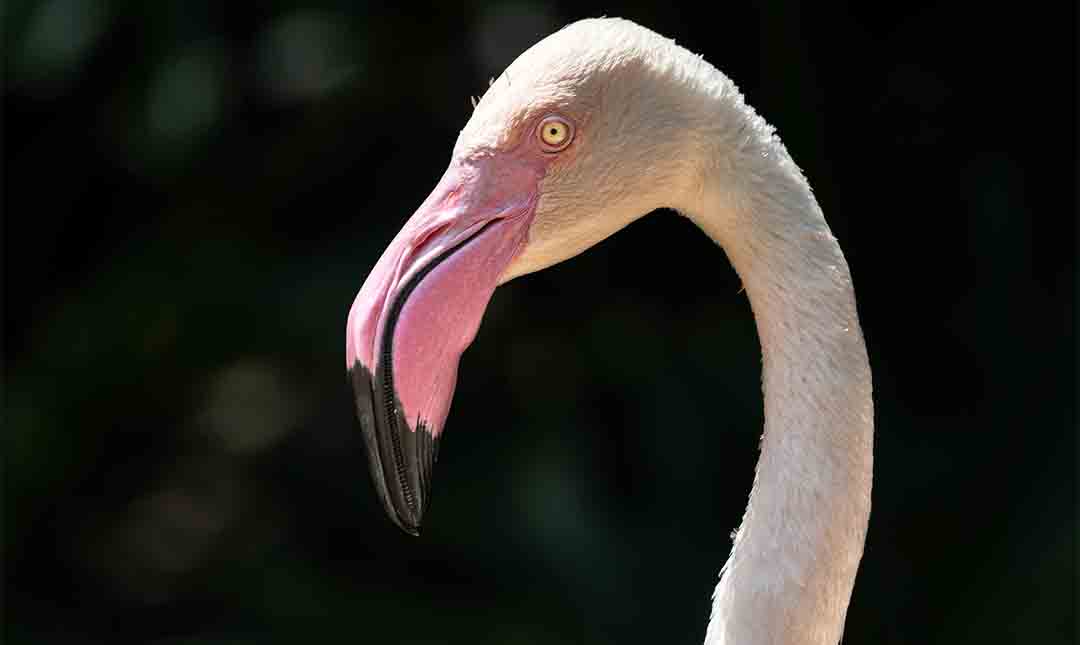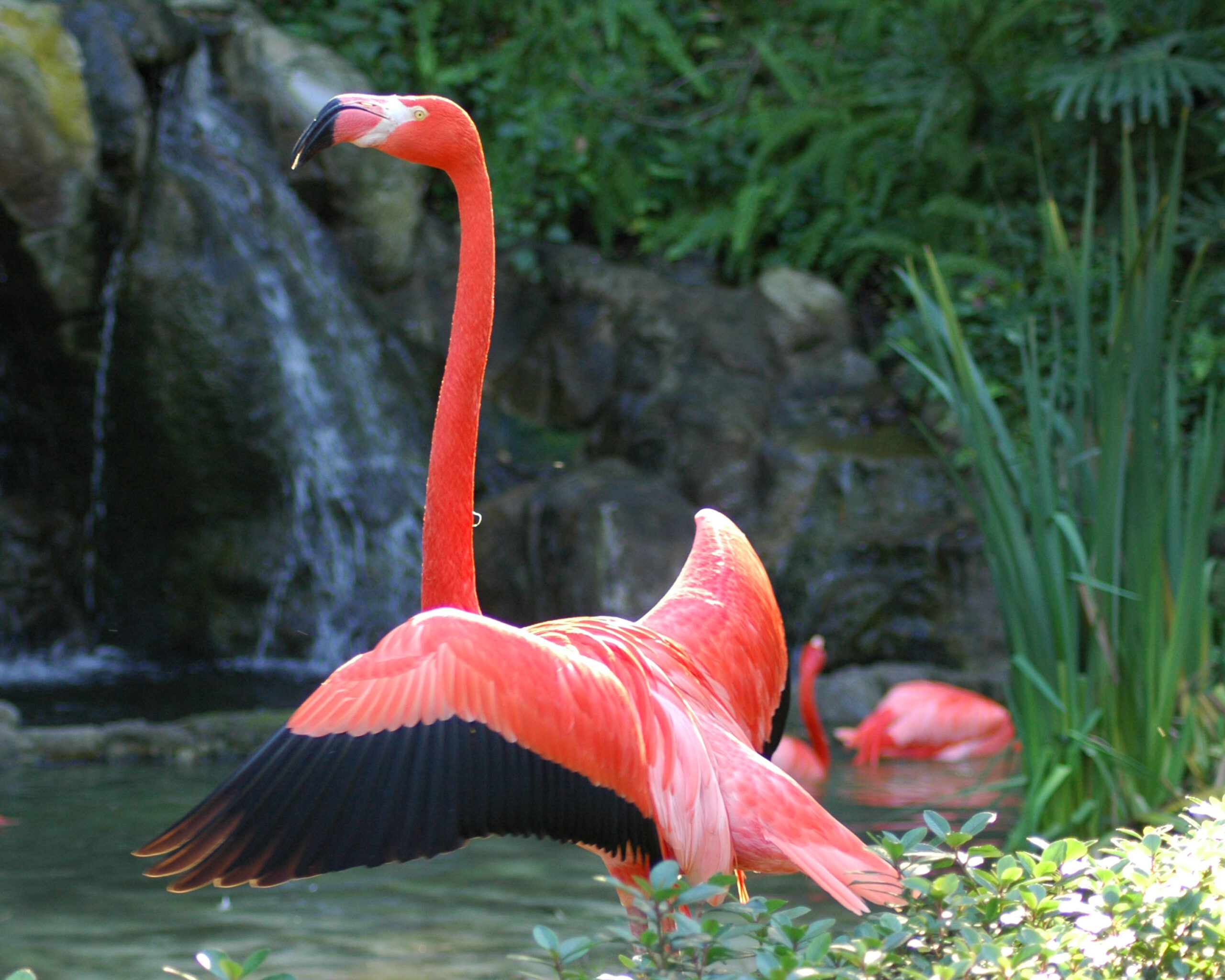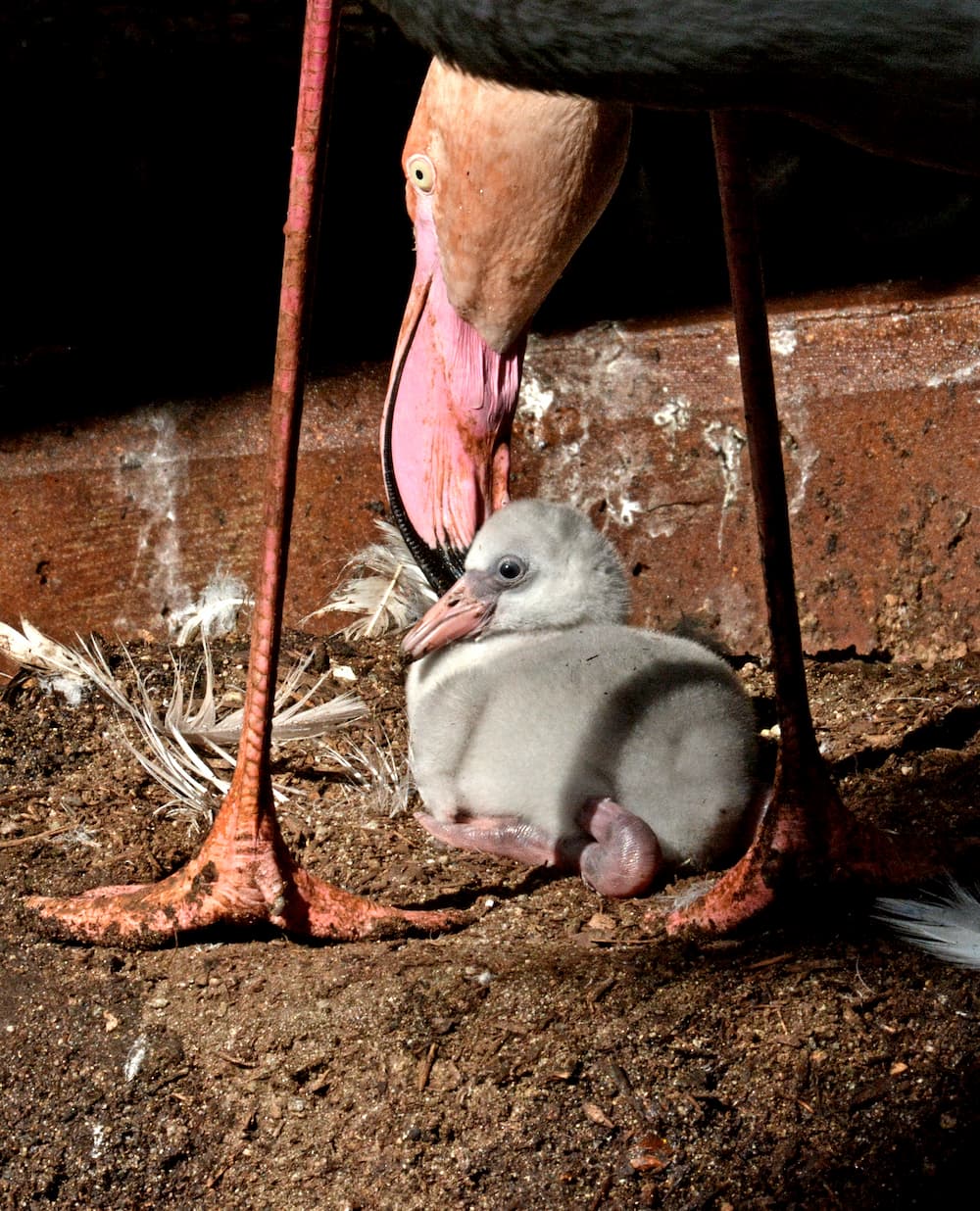About
Flamingos appear to walk by bending their knees backwards. However, what looks like a knee is actually an ankle. A long foot bone extends down to the four toes, the front three of which are webbed. Their long spindly legs allow them to wade deeper into water than other birds and their long necks allow them to reach food such as invertebrates and algae that grow at the bottom of the shallows. Their various shades of pink and red feathers are created by a carotenoid pigment in the food they eat.
Flamingos are extremely gregarious birds with some flocks consisting of up to 200,000 paired birds. The entire colony breeds at the same time. Each monogamous pair builds a cylindrical mud nest and the female lays a single egg into it that both parents take turns incubating. The egg hatches in about four weeks and the chick is then fed “crop milk,” which is produced by both parents. The crop is basically an expandable muscular pouch near the throat, an extension of the esophagus, that is used to store excess food for later digestion. In some birds, the crop secretes a nutritious liquid that parents can regurgitate to feed their offspring. After about one month feeding on crop milk, the chicks begin to eat solid food. Since the adult coloration depends on diet, the chicks remain gray until they transition to solid food. It takes about two years for them to reach their full adult coloration.
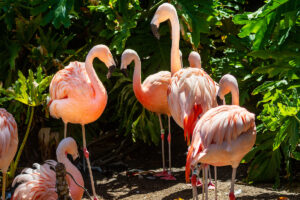
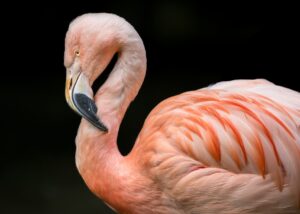
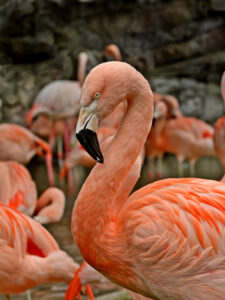
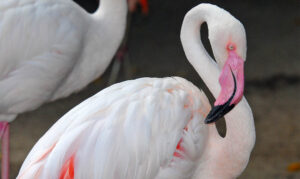
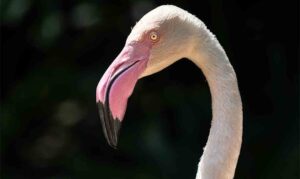
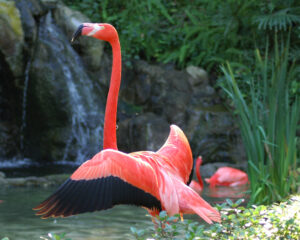
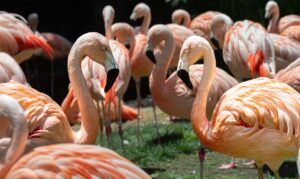
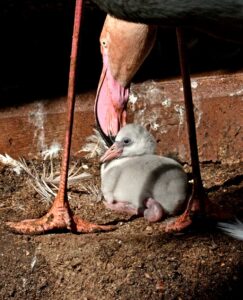
Status
Greater flamingo – Least Concern
Chilean flamingo – Near Threatened
Habitat
Chilean flamingos live in South America and greater flamingos come from Africa. The greater flamingo is the largest and most widespread of all flamingo species. Both species live in a wide variety of freshwater and saltwater habitats, including the shallows of lakes, estuaries, and lagoons.
Diet
These filter feeders use specialized beaks to strain a variety of small arthropods from waterways. In zoos, flamingos are fed a special diet containing canthaxanthin in order to maintain their distinctive color.
Physical Characteristics
Chilean flamingos are the shorter species, reaching a height of up to three-and-a-half feet and weighing up to five-and-a-half pounds. They have light pink feathers and a white beak with a large black tip. Greater flamingos are taller, growing up to five feet tall and weighing up to nine pounds. They have white feathers tinged with pink and a distinctive bubblegum pink beak with a small black tip. The typical lifespan of both species in the wild is between 20 and 30 years and up to 60 years in human care.

